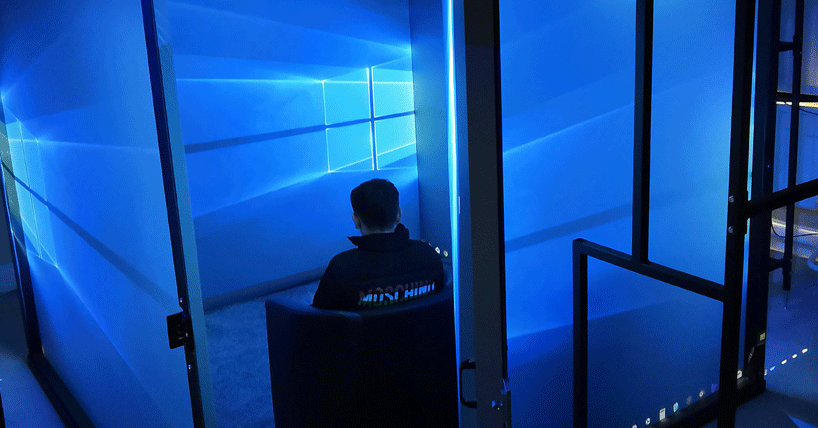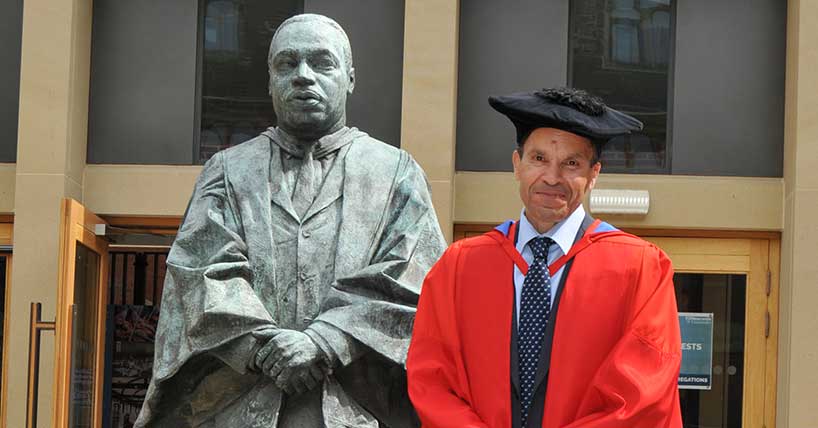Blue Room for overcoming phobias in autism
Virtual reality therapy treats autism phobias
Published on: 15 February 2019
Immersive virtual reality has been shown to help children with autism with nearly 45% remaining free from their fears and phobias six months after treatment.
A separate study has also shown for the first time that the treatment works for some autistic adults.
The Blue Room, developed by specialists at Newcastle University working alongside innovative technology firm Third Eye NeuroTech, allows the team to create a personalised 360 degree environment involving the fear which may debilitate the person with autism in real life.
Within this virtual environment, which requires no goggles, the person can comfortably investigate and navigate through various scenarios working with a therapist using iPad controls but remain in full control of the situation.
Funded by the National Institute for Health Research (NIHR), the research findings are published in two papers today in the Journal of Autism and Developmental Disorders and in Autism in Adulthood.
“For many children and their families, anxiety can rule their lives as they try to avoid the situations which can trigger their child’s fears or phobia,” says Professor Jeremy Parr, Institute of Neuroscience, Newcastle University, who led the studies.
“To be able to offer an NHS treatment that works, and see the children do so well, offers hope to families who have very few treatment options for anxiety available to them.”
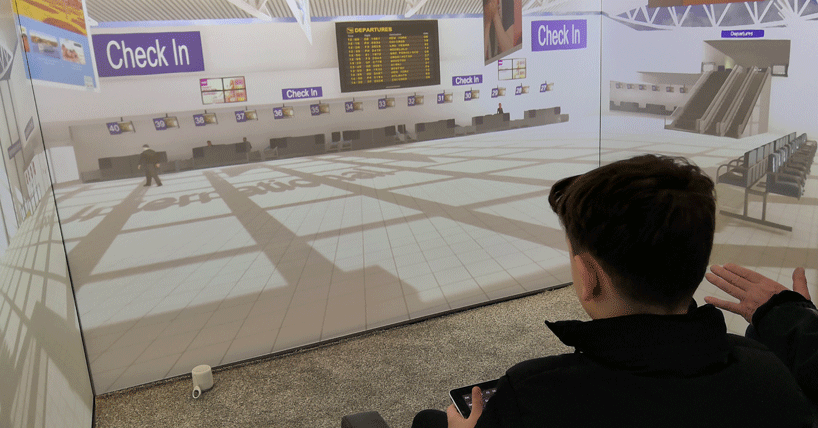
Autism can affect a child’s learning and development, often resulting in impaired social and communication skills and many also have fears or phobias which can be very distressing but are often overlooked. It is thought these phobias affect around 25% of children with autism. In the trial phobias included travelling on public transport, school classrooms, dogs and balloons.
The Newcastle University experts describe the randomised controlled trial involving 32 children with autism aged 8 – 14 years. Half received treatment in the Blue Room straight away and half acted as a control group, receiving delayed treatment six months later.
Accompanied by a psychologist they underwent four sessions in a week involving a personalised scenario in the Blue Room. Parents were able to watch the treatment via a video link.
“People with autism can find imagining a scene difficult which is why the Blue Room is so well-received. We are providing the feared situation in a controlled way through virtual reality and we are sitting alongside them to help them learn how to manage their fears,” explains Dr Morag Maskey, researcher from the Institute of Neuroscience, Newcastle University.
“It is incredibly rewarding to see the effect it can have for some, overcoming a situation which just a week previously would have been so distressing.”
After receiving the treatment and with the support of their parents, the children were then introduced to the scenario in the real world.
Two weeks after treatment, the research shows that four of the first 16 (25%) had responded to treatment and were able to cope with a specific phobia. This effect remained with a total of six showing improvement after six months (38%), however, one reported a worsening of their phobia. Meanwhile, in the control group, five untreated participants had become worse in the six months.
The control group went on to be treated in the Blue Room after this time. Results showed that overall 40% of children treated showed improvement at 2 weeks, and 45% at 6 months.
This improvement is comparable with other treatments and the team intend to further examine why some don’t respond.
Dr Rajesh Nadkarni, Executive Medical Director at Northumberland, Tyne and Wear NHS Foundation Trust, said: "We are proud to be a partner of the Newcastle Blue Room Treatment which is helping people with autism to manage their anxiety. Northumberland, Tyne and Wear NHS Foundation Trust has a strong track record in providing nationally recognised autism services, and we welcome this new research demonstrating the positive effects of this highly innovative treatment."
The Blue Room for autistic adults
For the first time, the Blue Room treatment was offered to autistic adults. In a separate publication in Autism in Adulthood by the same team, the VR treatment was shown to work in five out of eight autistic adults.
Aged 18- 57, the adults received four 20 minute sessions in the Blue Room with a personalised computer generated scene. Six months after the sessions, five of the eight participants still had real life day-to-day improvements in relation to their phobia.
Eddie Nelson is Director of Third Eye NeuroTech, the immersive reality technology company based in County Durham which provides the Blue Room facility. He says: “It is rare as a business that we get the chance to help young people and their families in such a dramatic and tangible way. But what we see with the Blue Room is very anxious young people and adults coming in, yet within four of these specialised sessions they come out having combatted their fears.”
Specific phobias which were addressed in the Blue Room treatment included: Dogs, Wasps/bees, lifts, fear of the dark, flying, dolls, balloons, public transport, school, walking into rooms.
Alongside the NHS Service, the Newcastle University team are continuing further research into the effectiveness and lasting effect of the Blue Room.
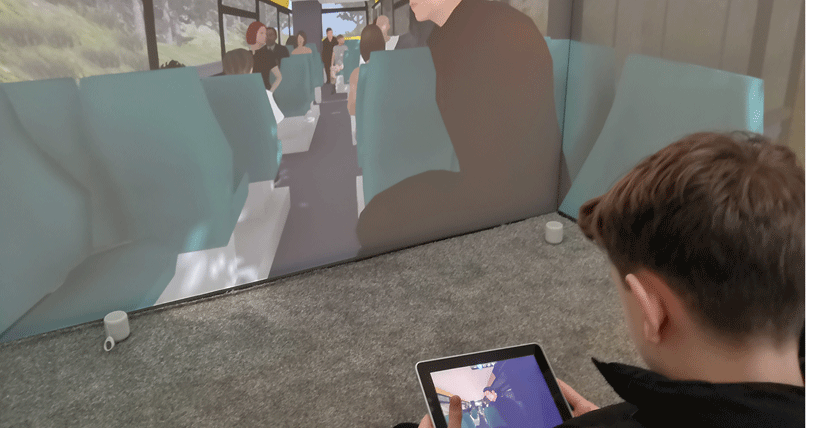
Patient’s perspective: Harry, 11
Schoolboy Harry Mainwaring used to live in fear of coming into contact with dogs.
The autistic youngster would fly into a state of panic and hysteria if a four legged friend approached him or was even within his vicinity.
But now the 11-year-old, from Tyne Valley, has a dog of his own and can happily pet any dog he sees without fear or anxiety.
Harry was part of the Blue Room study and the Newcastle University team created a personalised 360 degree environment involving dogs and different situations that he may encounter them, such as a street or beach.
The youngster responded extremely well to the visual therapy and three years on Harry has no fear of dogs and adores his pet terrier.
His mother Lizzie, 43, said: “Harry was diagnosed with autism at the age of three and his main fear was dogs, which was problematic for him and the family.
“As soon as Harry saw a dog he would become hysterical, screaming and running away. This was very dangerous as he would not look at where he was running, even if it was onto a road, as he just wanted to be nowhere near the animal.
“If we went to friends’ houses they would have to lock their dogs away and it was incredibly difficult to go to the beach as dogs are everywhere there.
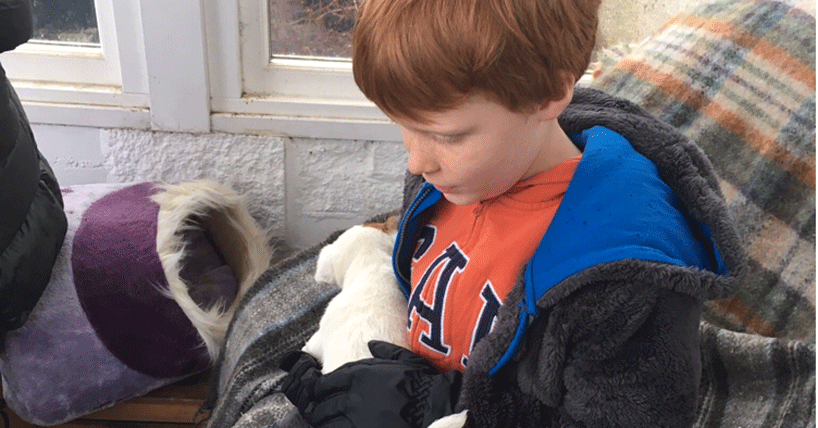
“Harry had just turned eight when he was part of the Blue Room study. He had a total of four sessions and the results have been fantastic – in fact, they’ve been life-changing.
“It is amazing to see how Harry now is with dogs. He loves our dog and whenever he sees others he’s happy if they approach him and he’ll stroke them.
“I am so glad that he took part in the Blue Room and that he’s had long-term effects from it. I would certainly recommend that other autistic children try this form of therapy as it involves no medication and has no side-effects.
“It is great that the Blue Room has been pioneered by experts in Newcastle as it shows that the region is leading the way in this important autistic development.”
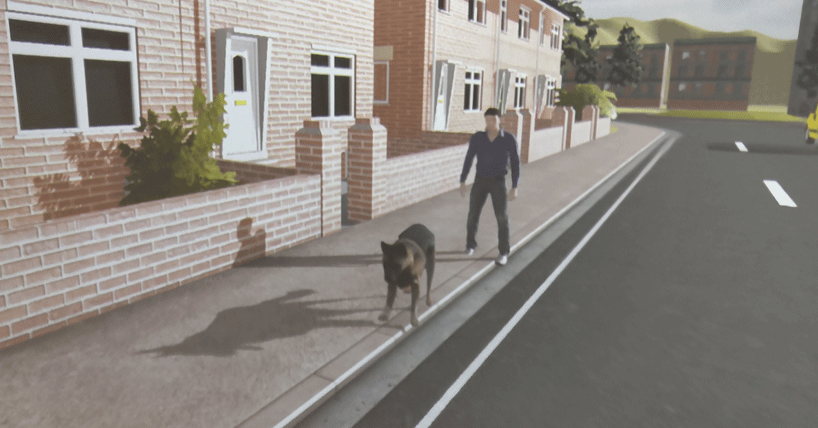
Patient’s perspective: Rebecca, 26
Rebecca, 26, was diagnosed with autism four years ago and suffered a debilitating fear of walking through doorways. She was put in contact with the team and had four treatment sessions in the Blue Room.
She said: “The fear of going through a door or down a corridor with doors leading off it was so intense that it led to me to drop out of University for a year. The whole situation was not good.
“The first time I was in the Blue Room I was nervous, even though I had been told what to expect. The scene in front of me was like you’d find in a typical University corridor with doors stretching out in front of me.
“By the end of the third session in the Blue Room, I was able to push open and go through all the doors presented to me in the virtual scene. Then I had to do it in real life.
“Before the sessions, when I was out and about, my support workers had to go through doors before me – after the sessions, I went through first. The Blue Room gave me back my independence.
“I took what I had learned in the Blue Room and practiced so that I am able to do things that I hadn’t before, such as shopping by myself, travelling on the Metro and even travelling to Japan on my own. Most importantly I was able to return to my university studies graduating last year with a 2. 1.”
